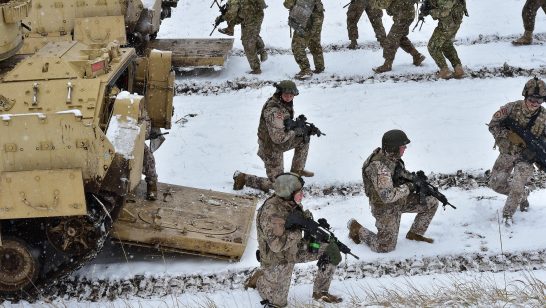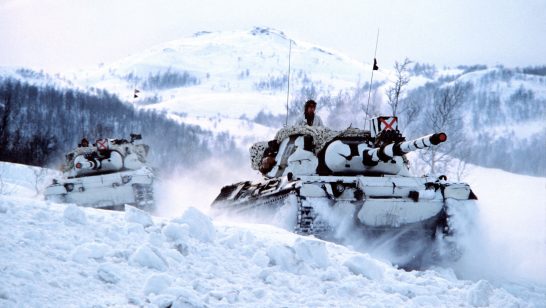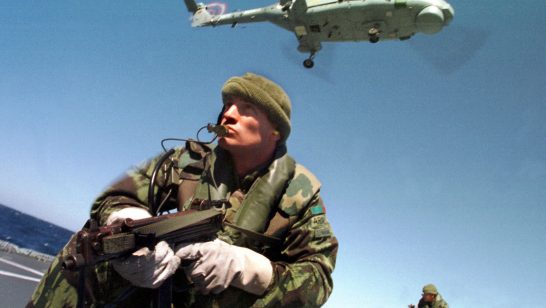
The latest rejuvenation of the European defence project underscores more clearly than ever that EU member states will have to make not just financial but political sacrifices if they really want improved security.
Money alone will not fix it. Political cohesion and tough prioritisation within the EU’s Global Strategy and Defence Action Plan will be essential at the European Council’s meetings this March and June if the EU is to contribute to better defence for the people of Europe in the face of proliferating security risks and an uncertain US ally.
There are two key obstacles to more meaningful EU – and wider European – defence.
First, Europeans hold very differing perceptions of threats and national security interests. In the EU’s culture of compromise this can mean that the European defence effort loses focus. The ambition of EU “strategic autonomy” set in the Global Strategy last July means very different things to different member states. Yet for meaningful progress towards really strategic autonomy, prioritisation will be a necessity, not just good practice. And, to prioritise, member states should have a shared view of the severity of each threat, its proximity and their response. This is currently missing.
Second, Europeans have very different defence and military cultures. Even though EU leaders now supposedly share the vision of the EU’s Global Strategy, their decisions on how funds should be spent or what capabilities should be developed are still national. With Germany viewing defence as an extension of the political agenda, with a limited military component, and France preferring strong intergovernmental military cooperation [1], what capabilities are to be funded and how defence will be executed remain open questions. Future collective action will be tremendously difficult.
To overcome both challenges would require excellent leadership and remarkable diplomacy. Yet there are a few gradual steps that could bridge gaps and deliver results. So it is worth establishing an agenda for practical progress.
Prioritisation
A critical first step should be to narrow the current action priorities and to channel most of the available funding towards a selected few. The European Council Conclusion from 14 November ‘takes note’ of over ten priority areas. And the Conclusions from 15 December are even vaguer: they only call for a ‘comprehensive’ follow up and request proposals from the High Representative. Considering the limited funding available until the next EU Multiannual Financial Framework is adopted, actioning these priorities at the EU level will be a slow process [2]. It would mobilise far more action if EU member states (in conjunction with NATO where appropriate and possible) made the political effort to determine as soon as possible how European security should look in the years to come and agree on what the EU as a defence provider wants to focus on – in the short, medium and long term.
Among the priorities already announced, reviewing existing capabilities and developing situational awareness should take precedence over creating new structures, developing overall military or civilian capabilities, or strengthening the rapid deployment of EU Battlegroups.
The results of a review of existing capabilities would help to remove unrealistic expectations, identify critical capability deficits and enable more efficient allocation of resources and responsibilities, thus facilitating progress on other tasks. A harmonised review would also significantly boost greater synergy with NATO on defence policies and capabilities. EU member states have not actually adopted the capability review proposal, nor have they accepted uniform assessment standards [3]. This will have to be rectified quickly if the co-ordinated annual review on defence, which is member state-driven, is to produce meaningful results.
Similarly, improved situational awareness would provide other key foundations for progress such as the mapping and monitoring of security vulnerabilities. It would assist the informed responsiveness that should shape defence planning and development at the strategic and tactical levels.
The upcoming EU Council meetings in mid-March and in June should emphasise these two priorities and set deadlines for their implementation.
NATO-EU collaboration
A second core step for strengthening European defence in the short to medium-term would be the deepening of pragmatic cooperation between the EU and NATO. Joint exercises, enhanced communication on and operational protocols for in-theatre activities, would be a substantial improvement on the still limited cooperation between the two organisations. Given the substantial overlap in membership, the nearly identical neighbourhoods they share, and the theatres of operations they have in common, better synchronisation between the two institutions is much needed. Logical further steps would lead to consolidated regional airspace and maritime surveillance, air lift or intelligence and communications protocols.
There remain significant political obstacles to be overcome, not least on the exchange of classified information. Nevertheless, the July 2016 Warsaw Joint Declaration and the parallel November 2016 European Council and December 2016 North Atlantic Council decisions on implementation have built real momentum. An even stronger member state commitment to fully coordinated EU-NATO capabilities review and development and a joint planning process and could do much for Europe’s security.
Structured Cooperation
Finally, to be able eventually to act independently of the US – to be “strategically autonomous” – EU member states should activate the Lisbon Treaty’s provision for permanent structured cooperation (PESCO). Its full potential for setting common objectives, streamlining military planning, pooling resources and agreeing on specialization could act as a bridge between the differing threat perceptions and the diverging defence cultures. Going beyond simple intergovernmental collaboration and ad hoc coalitions, PESCO offers a set legal framework of standards and practices that would lead to greater convergence and eventually integration of defences. It could also provide access to the Defence Fund with which common capabilities can be paid for.
With its original aim of establishing a defence union, PESCO is among the most practical ways in which Europeans can do more with less, addressing shortfalls in capabilities and force generation in a joined up way. However, PESCO has so far proven to be too ambitious and politically divisive. And NATO manages without an equivalent. But NATO has seen a proliferation of “framework nation” approaches among European Allies. These offer the EU a model for an initial approach to PESCO that could be less divisive but that still provides legal structure for EU institutions that lack NATO’s defence culture. It could also generate the momentum for gradual, greater integration in the future.
These three steps, if implemented skilfully, would deliver positive net effect for European security. Facing the necessity of greater security and defence efforts and investments, national governments have to accept that these efforts and investments will yield little without embracing the political pain of tougher prioritisation, more vigorous collaboration with NATO and more determined, structured defence cooperation.
****
[1] Daniel Keohane – Three’s company? France, Germany, the UK and the European defence post-Brexit, Available here: http://www.realinstitutoelcano.org/wps/wcm/connect/3d35b207-f5a5-4f3e-8d21-0cae66f9e644/ARI1-2017-Keohane-Threes-company-France-Germany-UK-European-defence-post-Brexit.pdf?MOD=AJPERES&CACHEID=3d35b207-f5a5-4f3e-8d21-0cae66f9e644.
[2] Two windows of the European Defence Fund have been proposed. For the first, a “research window”, the Commission has suggested EUR 25 million as part of the 2017 EU budget, and expects that this allocation could grow to a total of EUR 90 million by 2020. The second, a “capability window”, would have to be agreed by the Member States, with current estimates of EUR 5 billion per year to be made available. More information can be found here:http://www.europarl.europa.eu/RegData/etudes/IDAN/2016/571405/IPOL_IDA(2016)571405_EN.pdf.
[3] Bastian Giegerich, European Defence and the Emperor’s New Uniform,http://www.iiss.org/en/militarybalanceblog/blogsections/2016-629e/december-e473/european-defence-and-the-emperors-new-uniform-0f7b.
The opinions articulated above represent the views of the author(s), and do not necessarily reflect the position of the European Leadership Network or any of its members. The ELN’s aim is to encourage debates that will help develop Europe’s capacity to address the pressing foreign, defence, and security challenges of our time.



